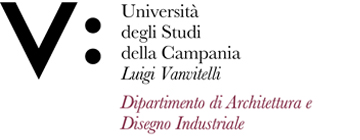Carla LANGELLA
Insegnamento di BIO-INNOVATION DESIGN
Corso di laurea magistrale in DESIGN PER L'INNOVAZIONE
SSD: ICAR/13
CFU: 8,00
ORE PER UNITÀ DIDATTICA: 64,00
Periodo di Erogazione: Primo Semestre
Italiano
| Lingua di insegnamento | ITALIANO |
| Contenuti | L'insegnamento affronta il tema della collaborazione tra design e bioscienze negli ambiti della biomimetica, del design biomedicale, del design biocompatibile. Il design con le sue capacità di prefigurazione e proposizione di nuovi scenari è in grado di rispondere alle nuove esigenze del vivere contemporaneo avvicinando scienza e società. Il progetto propone una visione dell'evoluzione del prodotto industriale attraverso il design che consente di rendere i prodotti adattabili al mutare delle condizioni scientifiche, tecnologiche, sociali e culturali nell'ottica della metafora biologica. |
| Testi di riferimento | I testi di riferimento sono: |
| Obiettivi formativi | L'isegnamento intende fornire conoscenze di base su: principi, terminologia e bibliografia scientifica relativa allo scenario che nasce dall’intersezione tra design e bioscienze. Si propone , inoltre, di fornire ulteriori conoscenze metodologiche di biodesign. Pertanto è finalizzato a un percorso formativo al termine del quale lo studente sarà in grado di sviluppare un progetto biomimetico dal concept alla prototipazione. |
| Prerequisiti | oscenze di base sulla storia del design e buona capacità di modellazione tridimensionale. |
| Metodologie didattiche | segnamento prevede lezioni frontali, seminari con scienziati, laboratorio progettuale e attività di sperimentazionee ricerca condotte in aula in forma di workshop e esercitazioni, attività di ricerca e progettazione svolte da casa orientate a stimolare la capacità critica, di interpretazione e propositiva. Sono previste anche visite a musei e aziende. |
| Metodi di valutazione | Il corso prevede un calendario didattico caratterizzato da momenti di verifica prevalentemente individuali. Lo stato di avanzamento dei progetti sarà valutato settimanalmente attraverso presentazioni cartacee e multimediali appositamente realizzate dagli studenti. Sono previste presentazioni intermedie per la verifica del brief, del concept, del progetto definitivo e degli elaborati di presentazione. Tali presentazioni concorrono alla valutazione finale e i principali parametri di valutazione sono: puntualità e partecipazione attiva alle attività del laboratorio, rilevanza del problema affrontato, originalità della soluzione proposta, efficacia della presentazione. |
| Altre informazioni | L'insegnamento pevede la collaborazione con scienziati e aziende. |
| Programma del corso | segnamento si struttura secondo i seguenti contenuti: Processi evolutivi dell'artificiale; Le nuove dimensioni di innovazione bio-tecnologica del prodotto di design; Il rapporto tra design, materia e natura nello scenario della produzione contemporanea;Bio-innovazione e design di prodotti, servizi e sistemi di prodotti/servizi sostenibili;La relazione tra design e scienza;Science inspired design; Design in lab; La natura come riferimento di sostenibilità ambientale; Design e cicli di vita, Life Cycle Design. Strumenti e strategie di LCA, Ottimizzazione e sostenibilit; Il design che interpreta i nuovi progressi della scienza; Biomimetica e design; Metodologia di progetto biomimetico; Design e biotecnologie; Il design che reinterpreta la materia; Le nuove qualità dei materiali rinnovabili; Il trasferimento tecnologico di materiali e tecnologie avanzati al design, Interattività e progetto. Human device interface, La dimensione comunicativa dei materiali |
English
| Teaching language | Italian |
| Contents | The course deals with the theme of collaboration between design and biosciences in the areas of biomimetics, biomedical design and biocompatible design. Design with its capacity for prefiguration and proposition of new scenarios is able to respond to the new demands of contemporary living by bringing science and society closer together. The project proposes a vision of the evolution of the industrial product through design that makes it possible to make products adaptable to changing scientific, technological, social and cultural conditions from the perspective of biological metaphor. |
| Textbook and course materials | The reference texts are: |
| Course objectives | course aims to provide basic knowledge on: principles, terminology and scientific bibliography related to the scenario that arises from the intersection between design and biosciences. It is also proposed to provide additional methodological knowledge of biodesign. Therefore it is aimed at a training course at the end of which the student will be able to develop a biomimetic project from concept to prototyping. |
| Prerequisites | ic knowledge on the history of design and good three-dimensional modeling ability. |
| Teaching methods | course includes lectures, seminars with scientists, design laboratory and activities of experimentation and research conducted in the classroom in the form of workshops and exercises, research and design activities carried out by the home aimed at stimulating critical, interpreting and propositional skills. Visits to museums and companies are also planned. |
| Evaluation methods | The course provides a didactic calendar characterized by mainly individual moments of verification. The progress of the projects will be evaluated weekly through paper and multimedia presentations specially made by the students. Intermediate presentations are provided for the verification of the brief, the concept, the final project and the presentation documents. These presentations contribute to the final evaluation and the main evaluation parameters are: punctuality and active participation in the activities of the laboratory, relevance of the problem faced, originality of the proposed solution, effectiveness of the presentation. |
| Other information | The course includes collaboration with scientists and companies. |
| Course Syllabus | course is structured according to the following contents: Evolutionary processes of the artificial; The new dimensions of bio-technological innovation of the design product; The relationship between design, matter and nature in the scenario of contemporary production; Bio-innovation and design of products, services and systems of sustainable products / services; The relationship between design and science; Science inspired design; Design in lab; Nature as a reference for environmental sustainability; Design and life cycles, Life Cycle Design. LCA tools and strategies, optimization and sustainability; The design that interprets the new progress of science; Biomimetics and design; Biomimetic project methodology; |








